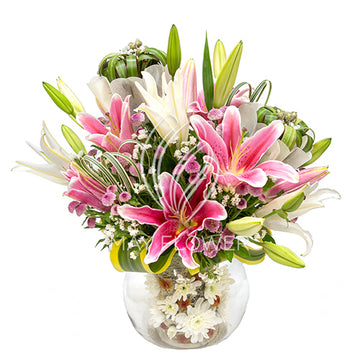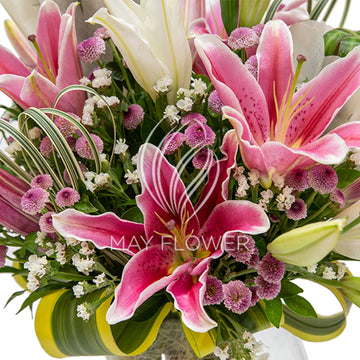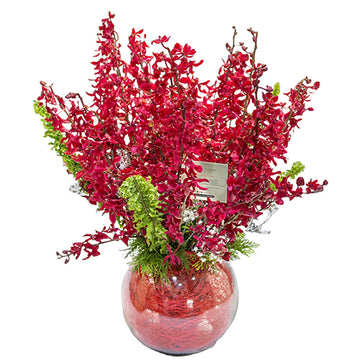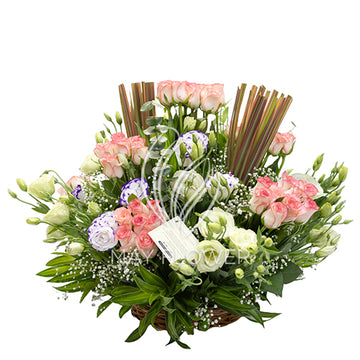Kaas Pathar – Nature’s Panorama of Colors
Imagine miles of lands stretched in front of your eyes covered in colorful blooms. This blissful sight is something you can expect after monsoon in the Kaas plateau. This site about 25 kilometers away from Satara, Maharashtra was declared UNESCO World Natural Heritage Spot in 2012, for being a biodiversity hotspot. It is home to wildflowers, shrubs, and grasses. The species of plants found here are unique and beautiful in their own right and are found to be in full bloom for a couple of months during and after the monsoon. This breathtaking spot mesmerizes the visitors and shows the power of nature.
Location: Where is Kaas Plateau or Kaas Pathar Located?

Located on a plateau near Satara, this stretch of flowering plants exists at the altitude of 1200 kilometers. The plateau is a result of volcanic activity. The activities have rendered the soil with a thin cover with unique volcanic rock soil properties. Due to this, the plants that survive here can survive in no other regions. This region is also amongst the heavy rainfall zones. Kaas plateau also known as Kaas Pathar by the locals, nurtures some 850 different species of plants. The plateau gets its name from the Kaasa tree, which sprouts white flowers in the month of March. What sets this tree apart, is that the green leaves of this tree gradually turn to red.
International Flowers Festival in India:
The valley of flowers comprises flowers such as orchid and Karvy shrubs. It also has 39 unique species that is found only in the region. This valley of endemic and endangered plants include flowering plants like Sonaki, Vaytura, Somada, Musali, Abhadi, Kandilpushpa, Deepkadee, Davbindu to name just a few. Few carnivorous plants, such as Drosera Indica, inhabit this region too. During the season the area looks like a multi-colored carpet with slightest variations of colors – it is nature at its best. Apart from the beauty of the flowers, it is also home to various species of endemic butterflies.

The following is a list of some of the flowers found on at Kaas Plateau:
- Ceropegia vincaefolia (Kandilpushpa/ Kandil kharchudi- कंदिल खर्चुडी)
- Drosera indica (Gavati Davbindu – गवती दवबिंदू)
- Senecio grahami / bombayensis (Sonakee – सोनकी)
- Utricularia purpurascens(Seetechee aasawe – सीतेची आसवे)
- Smithia hirsute / hirsuta (Kavala – कवळा)
- Wild Brinjal flower (kaaTe ringaNii – काटे रिंगणी)
- Adenoon indicum(mothi sonaki)
- Aponogeton satarensis (Vaytura)
- Arisaema murrayi(Pandhara Sapkanda)
- Ceropegia jainii(Somada)
- Chlorophytum glaucoides(Musali)
- Cyanotis tuberosa (Abhali)
- Dendrobium barbatulum(Bharangee)
- Dioscorea bulbifera(dukkar kanda)
- Dipcadi montanum(Deepkadee)
- Drosera burmanni(Davbindu)
- Elaeocarpus glandulosus(Kaasa)
- Exacum tetragonum (Udi chirayat)
- Habenaria heyneana (toothbrush Orchid)
- Hitchenia caulina(Chavar)
- Linum mysurense(Undri)
- Memecylon umbellatum(lAnjani)
- Murdannia lanuginosa(Abolima)
- Murdannia simplex(Nilima)
- Nymphoides indicum (Kumudini)
- Paracaryopsis coelestina(Nisurdi)
- Paracaryopsis malbarica(Kali Nisurdi)
- Pinda concanensis(Pinda)
- Rotala ritchiei(Paner)
- Senecio bombyensis(Sonki)
- Trichosanthes tricuspidata(Kondal)
- Vigna vexillata(Halunda)
- Habenaria longicorniculata
- Habenaria panchganiensis
- Flemingia nilgheriensis
- Habenaria grandifloriformis
- Begonia crenata
- Aerids maculosum
- Ceropegia media
- Impatiens oppositifolia
- Ipomoea barlerioides
- Oberonia recurva
- Pogostemon deccanensis
- Rotala fimbriata
- Smithia agharkarii
Attractions & Which period is good for visit Kaas Pathar?
Due to the natural beauty, this spot draws a large number of tourists, nature lovers and scientists. Though it is frequented during the monsoon, the best time to visit the plateau is right after monsoon from August through October. The international flowers are in its full glory during these three months. Orchids can be found for three to four weeks during this season. In order to the preserve, the region from damage by the tourists, only 3000 tourists are allowed per day. There is not much to do at this place apart from taking a walk and basking in the natural beauty. However, the rest of the plateau is a reserve forest, which tourists visit during their trip. To the south of the plateau, there is the Kaas lake with Kanher Dam and Sajjangad fort in close vicinity. India’s highest waterfall, Vajrai Waterfall, can also be included in the trip.
There are two ways to reach the Kaas plateau. One, a direct way from Satara. Two, you can reach it from Tapola, through the road connecting Panchgani and Mahabaleshwar. Come here if you are ready to have nature take your breath away.
To know more about:


























